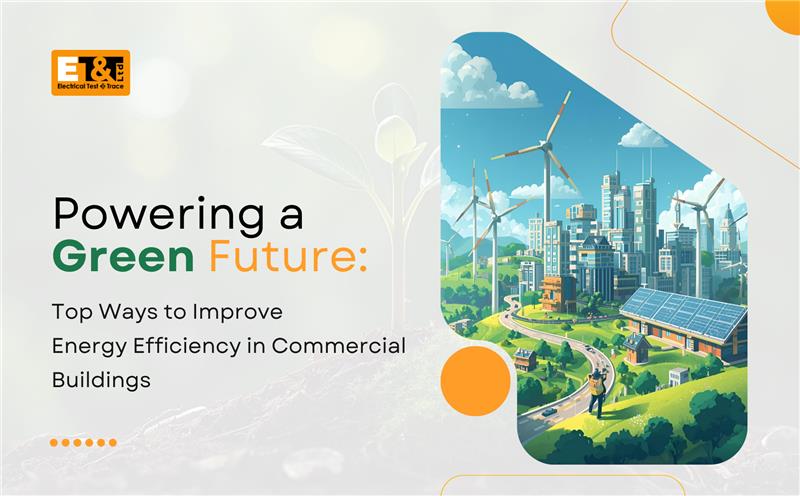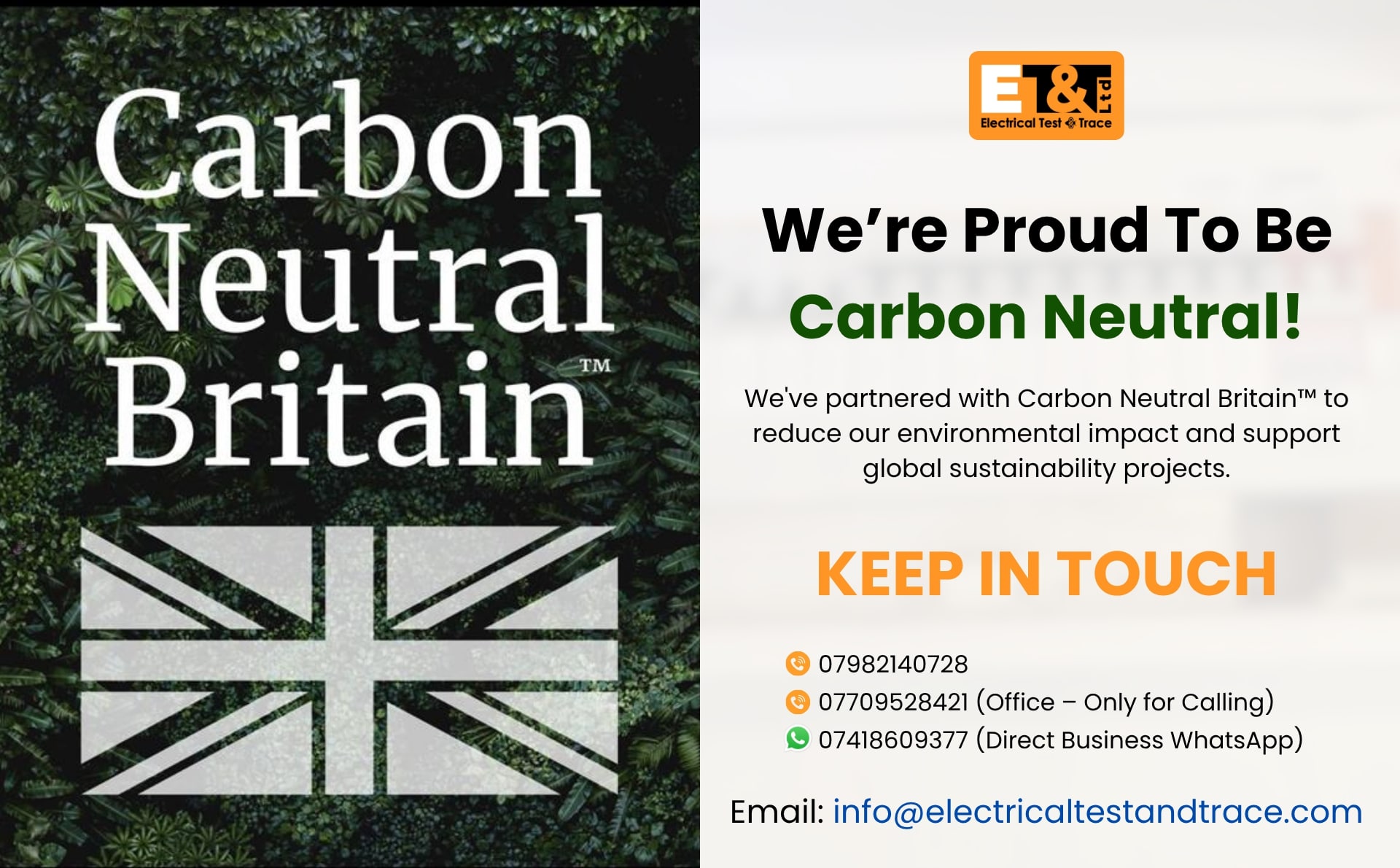As the world faces escalating energy costs and urgent climate challenges, improving energy efficiency in commercial buildings has become a top priority for businesses and property owners.
Commercial buildings account for a substantial portion of global energy consumption. However, it has been observed that up to 30% of the energy used in these buildings is wasted due to inefficiencies. This waste not only leads to higher operational costs but also contributes heavily to carbon emissions and environmental degradation.
Fortunately, advances in technology and design are enabling commercial properties to significantly reduce energy waste, lower utility bills, and build a greener future without compromising occupant comfort or productivity.
This blog examines the top ways commercial buildings can enhance energy efficiency and the positive environmental and business impacts that result from these improvements.
Top Ways to Improve Energy Efficiency in Commercial Buildings
Here are some simple ways to save energy and cut costs in commercial buildings:
Optimising HVAC Systems
Heating, ventilation, and air conditioning (HVAC) systems are typically the largest energy consumers in commercial buildings, often accounting for around 40-50% of total energy use. Ensuring proper maintenance and upgrading to energy-efficient HVAC technologies can yield significant savings.
Routine tasks, such as cleaning and replacing air filters, sealing duct leaks, calibrating thermostats, and scheduling regular inspections, help keep HVAC systems operating at peak efficiency. For older or inefficient units, retrofitting with high-efficiency components or replacing the system entirely can reduce cooling and heating costs by up to 20%. Smart controls and sensors that adjust HVAC operation based on occupancy and weather conditions further cut energy use while maintaining comfort for building occupants.
Enhancing Building Insulation
A well-insulated building envelope with minimal air leaks is foundational to energy efficiency. Effective insulation in walls, roofs, windows, doors, and even less obvious areas, such as HVAC ducts, pipes, and electrical outlets, reduces heat transfer, resulting in less energy being needed to heat or cool the building to a comfortable temperature.
Proper sealing and insulation can reduce energy bills by up to 10%, while also improving indoor air quality and occupant comfort. Using energy-efficient window panes, weatherstripping, and reflective roofing materials is a practical steps that yield both environmental and financial benefits.
Upgrading to Energy-Efficient Lighting
Lighting accounts for about 10-15% of energy consumption in commercial spaces. Upgrading to light-emitting diode (LED) lighting systems is one of the quickest and most cost-effective ways to save energy. LEDs use up to 75% less energy and last 25 times longer than traditional bulbs.
Integrating lighting controls, such as occupancy sensors and dimmers, ensures that lights are used only when needed, further reducing electricity consumption. Transitioning away from fluorescent lighting, especially that containing mercury, aligns with recent environmental health directives and reduces hazardous waste.
Implementing Smart Energy Management Systems
Advanced energy management systems (EMS) and building automation technologies provide real-time monitoring and control of energy consumption across all building systems. EMS platforms analyse data to identify inefficiencies, optimise equipment schedules, and automate adjustments to lighting, HVAC, and other energy loads based on actual usage patterns.
Smart systems enhance compliance with evolving sustainability regulations by simplifying reporting and enabling data-driven decisions. They would also allow businesses to participate in demand response programs, shifting energy use to off-peak periods and reducing strain on the grid.
Integrating Renewable Energy Technologies
To move beyond efficiency and towards sustainability, many commercial buildings are now generating on-site clean energy. Solar photovoltaic (PV) panels are the most popular renewable technology, converting sunlight into electricity to offset grid consumption. New building-integrated photovoltaics (BIPV) take it a step further by incorporating solar cells into windows, facades, and roof materials, thereby blending aesthetics with energy generation.
Solar thermal systems provide renewable energy for heating and hot water, thereby reducing reliance on fossil fuels. Energy storage technologies, such as battery systems, store excess renewable energy for use during periods of low production, ensuring reliability and reducing demand on traditional power sources.
Sustainable Building Materials and Construction Practices
Selecting sustainable, reusable, and biodegradable materials during construction or retrofitting reduces the environmental footprint of commercial buildings. Materials like bamboo, wood, and natural fibres have lower embodied carbon compared to traditional options.
Prefabricated and modular construction methods minimise waste and speed up build times, while recycling construction debris reduces landfill impact. These practices contribute not only to energy efficiency but also support broader corporate social responsibility goals.
Promoting Occupant Energy Awareness
Technology and infrastructure improvements alone cannot achieve optimal energy savings. Educating building users about energy conservation habits, such as turning off lights and equipment when not in use, optimising thermostat settings, and using natural daylight that amplifies the benefits of energy-efficient systems.
ET&T Group: Helping Businesses Achieve Energy Efficiency
Our experienced electricians at ET&T play a vital role in helping businesses achieve maximum energy efficiency and sustainability in their commercial properties. We provide expert electrical inspections, upgrades, and system optimisations designed to reduce energy waste, cut operational costs, and ensure full compliance with UK energy regulations.
Our team conducts thorough EICR (Electrical Installation Condition Reports) to identify inefficiencies, unsafe wiring, and outdated electrical systems that may be driving up energy consumption. We also help businesses modernise their facilities with LED lighting upgrades, smart controls, and energy-efficient HVAC electrical systems that respond intelligently to occupancy and environmental conditions.
Beyond safety and compliance, we support long-term sustainability by installing renewable energy solutions, integrating smart energy monitoring systems, and providing guidance on reducing power losses within electrical networks. Whether it’s a complete electrical retrofit for a large commercial building or targeted efficiency improvements, our electricians ensure every system operates at peak performance, safely and sustainably.
At ET&T, our mission is to help businesses power a greener future, enhancing performance, cutting carbon emissions, and building more innovative, energy-efficient spaces for the years ahead.


